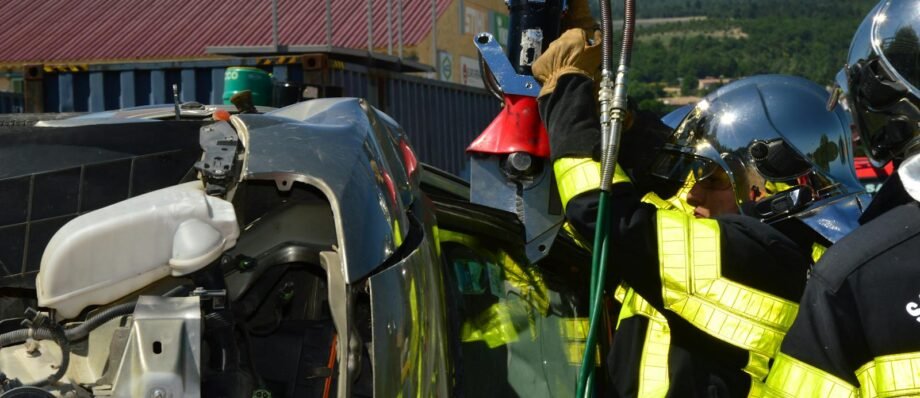It Wasn’t Your Fault—So Why Are You Still Suffering?
Imagine this: You’re driving home after a long day. You’re obeying the speed limit, focused on the road, and doing everything right—when suddenly, another car slams into you out of nowhere. You’re left injured, shaken, and staring at mounting medical bills. But you weren’t at fault… so who’s going to pay for all this?
It’s a frustrating and all-too-common situation. Accidents happen every day, and even if you were completely blameless, that doesn’t mean the aftermath is simple. Let’s break down exactly who may be liable when you’re injured in a car accident but didn’t cause it.
What Does “Liability” Mean in a Car Accident?
Liability refers to legal responsibility. In the context of a car accident, the liable party is the one who must pay for damages, injuries, and losses. If someone else caused the crash due to negligence—say, by speeding, texting while driving, or running a red light—they’re typically the one held liable.
But determining who’s legally responsible isn’t always as cut-and-dry as it seems.
Determining Fault vs. Proving Liability
Even if it’s obvious who caused the crash, you still have to prove it—and that’s where legal complexity comes in. Insurance companies often try to minimize their payouts. That’s why collecting evidence, witness statements, and police reports is critical.
Here’s what typically helps prove liability:
- Police accident reports
- Photos or videos from the scene
- Eyewitness testimony
- Traffic or surveillance camera footage
- Expert accident reconstruction
Sometimes, more than one party could be responsible—leading to shared liability.
Who Could Be Held Liable for Your Injuries?
Let’s explore the possible parties that may be liable if you weren’t at fault:
1. The Other Driver
In most cases, the at-fault driver’s insurance is responsible for covering your damages. This includes:
- Medical bills
- Lost wages
- Pain and suffering
- Vehicle repairs or replacement
If the driver was clearly negligent—e.g., drunk, distracted, or violating traffic laws—their insurer will typically handle your claim.
Tip: Don’t rely on the other driver’s insurance to “do the right thing.” They’ll protect their bottom line. Speak with a legal professional to ensure your rights are fully protected.
2. Multiple Drivers (in a multi-vehicle crash)
Multi-car accidents can be tricky. Liability might be shared among two or more drivers depending on who contributed to the chain of events. In these cases, comparative negligence laws may apply.
- In pure comparative negligence states, you can recover damages even if you were partially at fault—though your compensation is reduced accordingly.
- In modified comparative negligence states, you may only recover if you were less than 50% or 51% at fault, depending on the state.
Here’s a detailed breakdown of comparative negligence laws by state (NOLO).
3. Commercial Drivers or Employers
If you were hit by a truck or a company vehicle, the driver and their employer could be held liable. Under vicarious liability, companies are responsible for the actions of employees on the clock.
If a delivery truck driver was rushing to meet a quota and hit you, the company may be responsible for your damages.
4. Government Entities (Poor Road Conditions)
Sometimes, accidents are caused or worsened by dangerous road conditions—think potholes, broken traffic lights, or poor signage.
In these cases, a local or state government may be liable. But suing the government has strict deadlines and procedures, so legal help is essential.
Visit the U.S. Department of Transportation to learn more about roadway maintenance responsibility.
5. Vehicle Manufacturers (Defective Cars)
Was the accident caused by a mechanical failure—like a brake malfunction or airbag that didn’t deploy? If so, the vehicle manufacturer or a parts supplier might be held accountable under product liability laws.
What If the Other Driver Has No Insurance?
Unfortunately, not all drivers carry insurance—even though it’s legally required. If the at-fault driver is uninsured or underinsured, your own Uninsured/Underinsured Motorist (UM/UIM) coverage can help.
This optional insurance (in some states, it’s required) kicks in when the responsible party can’t cover your losses. It’s a smart move for all drivers to carry this protection.
According to the Insurance Information Institute, about 1 in 8 drivers in the U.S. is uninsured—so it’s more common than you might think.
Steps to Take Immediately After an Accident (When You’re Not at Fault)
Want to make sure your rights are protected? Here’s a quick list:
- Call 911 and request a police report.
- Take photos of the scene, vehicles, and any visible injuries.
- Exchange information with all involved parties.
- Seek medical attention, even if you feel okay.
- Contact your insurance company (but don’t admit fault).
- Consult a personal injury lawyer—especially if injuries are serious.
When to Call an Attorney
If you’re injured and weren’t at fault, hiring a lawyer isn’t just helpful—it can be critical. Insurance adjusters may offer lowball settlements or try to shift blame. A good attorney will:
- Investigate thoroughly
- Negotiate with insurance companies
- Maximize your compensation
- Handle all paperwork and deadlines
Don’t wait until you’re overwhelmed. Early legal help often leads to better outcomes.
FAQ: Injured in an Accident That Wasn’t Your Fault
1. Can I still sue if the other driver’s insurance offers a settlement?
Yes. You can reject their offer and pursue a personal injury lawsuit if it doesn’t cover your full losses.
2. What if both drivers are partially at fault?
Then comparative negligence laws apply. Your compensation will depend on your percentage of fault.
3. How long do I have to file a claim?
This depends on your state. Most states have a statute of limitations ranging from 1 to 4 years for personal injury claims. Check this guide by the American Bar Association.
4. What if I was a passenger in the car?
You may be able to file a claim against the driver of either car—whoever was at fault. You can also use your own insurance (PIP/MedPay).
5. Does my insurance go up if I wasn’t at fault?
In many states, insurers aren’t allowed to raise your premium for a not-at-fault accident—but it can vary. Always check your policy.
Final Thoughts
Being injured in a car accident you didn’t cause can feel deeply unfair. But understanding who may be liable and what steps to take can make all the difference. Whether it’s the other driver, a company, a government agency, or even a manufacturer—you have rights. And you deserve to be made whole.
Need help navigating your accident claim? Lawayer.com connects you with trusted attorneys who can guide you every step of the way. Don’t wait until the bills pile up—take action today.
Get the Compensation You Deserve After Your Accident
If you’ve been injured in a car crash that wasn’t your fault, don’t settle for silence or confusion. Lawayer.com connects you with› experienced attorneys who can fight for your rights and help you recover what you’re owed. Time matters—take the first step now


